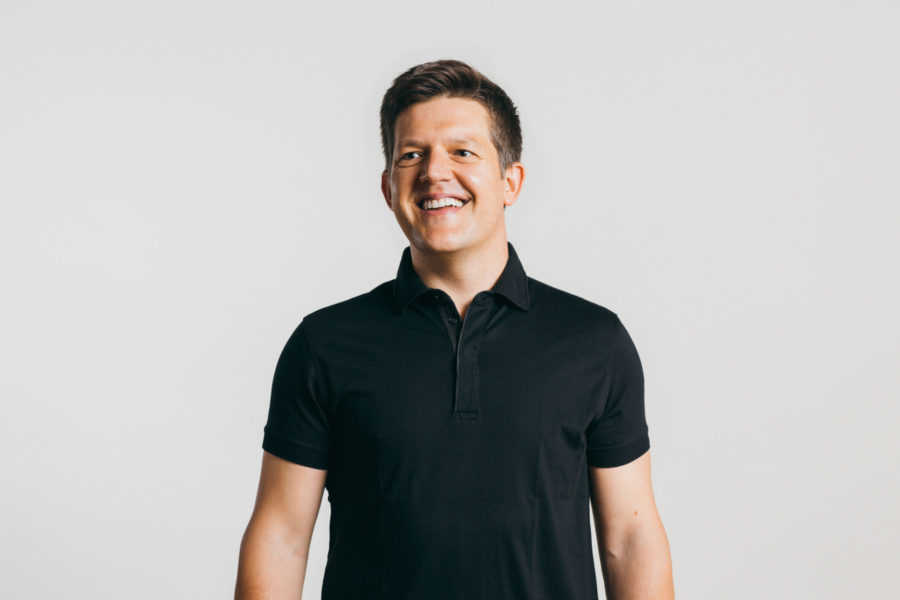Last year was a very good year for Sequoia Capital, one of Silicon Valley’s oldest and most respected venture capital firms.
Subscribe to the Crunchbase Daily
The Sand Hill Road powerhouse emerged as the standout venture investor of 2020 based on returns from exits, with seven of its portfolio companies going public and another two acquired for close to $1 billion or more.
We wanted to know how Sequoia, with five decades of investing under its belt, has consistently delivered returns on its many funds. I was lucky enough to speak with partner Roelof Botha about that and more. His insight on the firm’s returns and “patient capital” approach, team culture and overall strategy were as interesting as you might expect.
However, as a data analyst, I believe a good interview is only made stronger when paired with unbiased and independent research and we are fortunate enough at Crunchbase to spend our days doing just that.
What follows is a blend of the two — our objective analysis coupled with Botha’s personal experience — presented in tandem to provide a window into the winning strategy of this storied firm.
But first, Botha
Botha is soft-spoken and, like me, still talks with a hint of an accent from our native South Africa. He clearly values innovation, team culture and investing in startups at the earliest stages to — as he said in Afrikaans “buig die boompie terwyl hy jonk is,” or bend the tree while it’s young.
His personal trajectory is widely reported so we won’t spend too much time there. That said, a snapshot of his background is important in understanding what he brings to the firm.
Botha has co-led the U.S. venture practice since 2010 with Jim Goetz, and became the sole lead of Sequoia’s U.S. business in 2017. In 2002, Botha was the 28-year-old CFO who took PayPal public. He’s since been part of a number of Sequoia-backed companies that have gone public, including Unity Technologies, BridgeBio, Eventbrite, MongoDB, Square, Natera and Xoom. Botha is also on the board of 23andMe, a company that plans to go public via a SPAC merger with Virgin Group’s VG Acquisition.
Before joining Sequoia Capital in 2003 as an associate, he had worked with Sequoia partner Michael Moritz through the PayPal IPO and was invited to join the firm. Botha was made a partner in 2007 after Google’s YouTube acquisition, an investment he had advocated for two years earlier. The YouTube founders, friends of Botha’s from his PayPal days, were in the Sequoia office early on with Botha iterating on the product.
“When [PayPal] went public in 2002, we were the first ‘dotcom’ to go public after the crash in 2000. There were some people that thought we hadn’t learned our lesson in Silicon Valley. There was this one article in 2001 that said, ‘Earth to Palo Alto,’ and it was aimed at PayPal, sort of ridiculing us. But obviously they didn’t understand the business, and know what we knew.”
Now with 18 years of experience at Sequoia Capital and with more than 11 years at the helm of the U.S. business, Botha has a unique perspective on what it takes to build a successful practice. He acknowledges that he never takes success for granted, and that Sequoia is only as good as its next investment.
Part I: What’s a winning return? 5x and more
I asked Botha, as I do many investors, what he considers to be a good return for a venture fund.
While he declined to comment on Sequoia’s actual returns, he did provide some perspective on his measure of a good fund performance: North of 5x returns, net of fees and net of carry.
For many venture firms, a 3x net would be cited as a good return.
A 5x net return means that an investment of $100 million in a fund returns your initial investment of $100 million, plus a further $400 million, typically over a 10-year fund timeframe.
While Botha was keen to keep specifics about Sequoia’s returns under wraps, from my own analysis I understand the firm outperforms this “very good” metric. Sequoia’s venture funds that have reached maturity have been known to deliver net multiples from high single digits to well into the double digits, net of fees and net of carry.
The lowest possible double-digit net return would mean that if an LP invested $10 million it gets $100 million back. A $100 million investment would gain $1 billion back over time.
Botha acknowledged that the fund of 1999 performed poorly. The firm is not alone in that: Many funds from that period were impacted by the dotcom crash of 2000. In Sequoia’s case, the firm doubled down to try and return initial investments to its limited partners, including by taking pay cuts, Botha said.
Sequoia’s returns from IPOs
Let’s break down those possible returns by looking at all Sequoia’s portfolio companies.
Of those portfolio companies that have gone public and in which Sequoia had an ownership percentage greater than 5 percent, four of the five most highly valued at IPO debuted this past year.
You can see a list of its heavy hitters below. Sequoia’s 2020 exits included here impacted returns to funds going all the way back to the 2009 venture funds:

The public holdings for Sequoia’s U.S. portfolio are now valued at more than $40 billion, which includes the firm’s stakes in the 2020 and 2019 public debuts of Zoom, Unity, Snowflake, DoorDash, Airbnb and Medallia.
I analyzed 2020 initial public offerings based on Sequoia’s ownership percentage at IPO and calculated the firm’s current ownership value at $47 billion as of Feb. 3. Sequoia’s ownership in Airbnb alone is worth more than $18 billion as of that date, based on its percentage of ownership at IPO.

Timing is everything when it comes to IPOs, according to Botha, who also believes that a public market debut should never be rushed.
“It’s very difficult to be a public company and to disappoint in your first year or so,” he said. “There are a bunch of people who stuck their necks out, either the bankers or investment analysts who proposed holding your shares. And if you don’t have enough predictability in your business you will land in purgatory and you’ll sit there for a while and it will be very uncomfortable. Then it has all sorts of negative ramifications for employees. Employees see the share prices down 50 percent and it’s stuck there for two years, you have turnover, you have morale issues.”
I also tapped Crunchbase data to look at Sequoia’s unicorn portfolio companies. I found that across all of its funds including Sequoia Capital China and Sequoia Capital India, Sequoia is an investor in more than 100 current private unicorns. (The Crunchbase Unicorn Board has more than 700 companies globally.)
Sequoia Capital says the companies it has invested in over time are now worth over 25 percent of the value of Nasdaq. The firm has seven U.S. portfolio companies that went public in 2020, one of the highest counts for any single year for the firm.
Early involvement in those companies is critical, as is playing the long-game, said Botha.
“We have never wanted to prematurely push a company out of the nest, proverbially, to go public,” he said. “Which is part of what is important to realize about the 2020 IPOs: Those were all long in the coming. Unity was preparing its IPO the prior year already, getting its accounts in order, preparing for internal controls you need, hiring the right finance team, legal team, etc.”
A public-market debut isn’t the end of Sequoia’s relationship with its portfolio companies either. Firm partners often stay on the board of a portfolio company after it has gone public, as Botha has done as a board member with MongoDB, Square, Natera, Eventbrite and Unity Technologies.
Sequoia’s returns from M&A
Since 2012, per Crunchbase data, Sequoia has had at least 10 portfolio companies with disclosed amounts acquired at or above $1 billion, with two of those companies exiting in 2020 alone. ThousandEyes, acquired by Cisco in May 2020, was rumored to be at or close to $1 billion.
The largest venture-backed acquisition of all time, WhatsApp’s $19 billion purchase by Facebook in 2014, was also notable for having a single institutional investor: Sequoia Capital.

A factor in Sequoia’s success is its approach of investing in startups early, Botha said. “We always want to be a partner as early as possible. Sometimes we don’t meet the company or sometimes we make the wrong decision. If we’re not able to partner at the seed stage, maybe we can at the venture stage,” he said.

Part II: Patient capital, current funds and team culture
Sequoia’s current funds
In the U.S., Sequoia Capital is currently investing out of Seed Fund III (which includes the scout fund and Sequoia’s direct seed investing), Venture Fund XVII, and Growth Fund IX.
The firm is also investing out of the Global Growth Fund III, which backs portfolio companies across all geographies. These include Sequoia Capital China, led by Neil Shen, and Sequoia Capital India, led by Shailendra Singh.
“We keep on coming up with new ideas to reinvent the business,” Botha said, citing Sequoia’s dedicated seed fund, its scout program and the company design program launched in the past few years. More recently, Sequoia last year established a European office in the United Kingdom that invests as one team with the U.S fund.
Patient capital: ‘Winners keep compounding’
Sequoia considers itself “patient capital.” The firm will often wait years before it disperses shares to its shareholders from a portfolio company that has gone public.
“Sometimes people don’t realize how patient we are,” Botha said “And we’ve earned this right with our LPs, to have patience with distributions.”
It’s a strategic decision, he said. “Candidly, when we’re involved with these fabulous companies, why would you want to distribute the shares? These companies are going to do so well in the future. Whether it’s Mongo, Square, Natera — three of the IPOs I’ve been associated with in the last couple of years — where we’ve just held shares for a very, very long time,” he said.
In the case of Square, the firm did not distribute a single share until three years after its IPO. The company went public at $9 a share, and by the time it distributed, it was worth many multiples of that. When Sequoia first invested in the company in 2011, it paid 95 cents per share; when it distributed shares in December 2019, the price was $71.95.
Based on the share price increase in the past year — the stock has more than doubled again — even that may have been too early.
Botha explained further why the firm often holds for so long before it distributes. “The analysis we ran a couple of years ago is that if you bought every software company at the IPO and held it until today, you’d have made more money than if you bought when we did and sold at the IPO,” he said.
The venture business is characterized by what he calls “power law distribution.” Or, as he explains: “There are these handful of companies that really surprised you to the upside. Who would have thought that today Square is worth $100 billion, or that Zoom is worth $100 billion … or DoorDash is worth $60 billion and Airbnb is $100 billion? PayPal today is worth $300 billion. Google now is worth $1 trillion. No one would have thought that five or six years ago.”
Botha said he’s learned that winners keep compounding very powerfully. “The more we started to understand the ‘as held’ values of our companies, the more we felt that it’s actually our duty to be more patient with distributions,” he said.
The calculation for Sequoia is fairly simple, he said: “If we believe that these companies have the ability to continue to grow faster than the market at large, we should actually hold on to the shares. It’s something we actively think about.”
Mistakes are, of course, inevitable. “We still make a lot of mistakes,” he said. “I thought I was smart with the Square distribution and Square is now worth twice what it was worth at the point of distribution. It’s not like we have a crystal ball here. But we try to do right by our LPs.”
Team-oriented culture
The importance of team came up a lot in my conversation with Botha, as well as that tension between tribal wisdom and reinvention, a dynamic he said Sequoia confronts rather than avoids.
“We’re all here to serve and to leave the partnership in a better position than we found it,” Botha said. “You’re not coming to work for us, you’re coming to work with us. And if it turns out that you do well, you might be the person who sits in our seat and you’d be the next generation running the partnership.”
Case in point: Every decision to invest in a company at Sequoia requires a unanimous vote from all the partners.
“We operate as a team,” he said.
As one example offered by Botha: Doug Leone found Google as an investment for Sequoia but it turned out that Moritz was better-suited to join the board. Similarly, Bryan Schreier joined the board at Dropbox, though Moritz had led the firm’s investment in the company after Leone found the opportunity.
Part III: Sequoia in 2021
At Sequoia’s offices on Sand Hill Road in Menlo Park, the names of its investors, the majority of which are nonprofits or university endowments, are displayed on the doors as a reminder to the team of where the profits of its efforts end up.
Those investors include Stanford University, Harvard University and MIT, as well as organizations like the Hewlett Foundation and the Ford Foundation. On the health care side, they include Boston Children’s Hospital, Mayo Clinic, the Wellcome Trust and the Dana Farber Institute.
Through his decades growing companies, there’s been one constant for Botha: The market is always open for a good company and his role is to be a steward of the businesses, the entrepreneurs it invests in, and Sequoia in the process.
“I’m here to serve,” he said. “I’m here to recruit and train the next generation, so that they can take over the reins in due course. So these are very important cultural traits that I think have distinguished us. I also think we care about teamwork more than most.”
— Photo: Courtesy of Sequoia Capital

Stay up to date with recent funding rounds, acquisitions, and more with the Crunchbase Daily.




![Illustration showing AI agents, depicted by robots, performing digital tasks. [Dom Guzman]](https://news.crunchbase.com/wp-content/uploads/Quarterly-agenticAI-470x352.jpg)

![Illustration of IP shopping. [Dom Guzman]](https://news.crunchbase.com/wp-content/uploads/2021/06/Reopening-470x352.jpg)
![Illustration of a guy watering plants with a blocked hose - Global [Dom Guzman]](https://news.crunchbase.com/wp-content/uploads/quarterly-global-3-300x168.jpg)
67.1K Followers